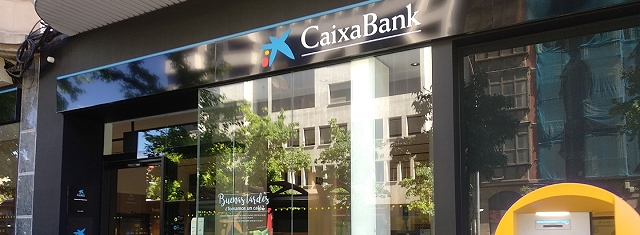Business
Spanish banking system is preparing to be reduced to three large entities
An era of mergers begins

Office of Caixabank (Source: Rosana Rivera)
USPA NEWS -
The Spanish financial system is oversized and inefficient in the face of threats such as the COVID-19 pandemic and its negative economic consequences. This is what the Spanish Government, the Commission and the European Central Bank believe, who advocate drastically reducing the number of financial institutions, until leaving it at three or four large banks. The two most important and with the greatest international presence - Santander and BBVA - will be joined by the one resulting from the merger between Caixabank and Bankia, whose negotiations are well advanced.
The bank that results from the merger between Caixabank and Bankia will be the largest by the value of its assets, even more than Santander and BBVA. Negotiations on the merger, promoted by the former conservative Government, are now in their final phase and have the approval of the Commission and the European Central Bank. Also with the support of the socialist Government of Pedro Sánchez, which concealed the progress in the negotiations from its second vice president and general secretary of the far-left coalition Podemos, Pablo Iglesias. This formation opposes the multinationals and defends the nationalization of the bank. Discrepancy that led Prime Minister Pedro Sánchez to keep the secret. The merger "will give stability" to the Spanish financial system, Sánchez said in an interview on Spanish public television on Monday.
The Spanish Government owns 68.3% of Bankia's capital, after the State had to rescue the entity with 24,069 million Euros to avoid its bankruptcy in 2012. The rescue was made with money contributed by Europe. Bankia, the result of the merger of several savings banks - a traditional type of financial institution in Spain, with public participation and focused on customers - was not the bank that, at that time, was in the worst financial situation. But it was too big and it paid the consequences of bad management. The agreement to rescue Bankia included the dismissal of his head, the former Minister of Economy Rodrigo Rato, and a commitment to return the aid received, which has only been fulfilled by 20% eight years later.
Europe wants the Spanish State to reduce its stake in Bankia to less than 15% of the entity's capital. The COVID-19 pandemic, which has caused an unprecedented drop in the profits of Spanish banks and threatens a wave of delinquencies, has left Bankia in a very delicate situation, with losses close to 80%. It is the moment chosen by Caixabank to buy Bankia. Because, although there is talk of a merger, the Caixabank-Bankia operation is, above all, an absorption.
The stock market welcomed the announcement of the imminent agreement with a significant rise in the price of both entities. Consumer associations, however, warn that the merger may hurt customers with the loss of profits associated with their accounts. They believe that three or four large banks will be able to impose new fees and raise interest rates, since clients will not have the necessary competition to oppose it.
The reform of the Spanish financial system is dated: 2023. That year, the Government and Europe want only Banco Santander, BBVA, the result of the merger between Caixabank and Bankia, and Bankinter to remain. The latter maintains its solvency and profitability, and does not need to associate with any other bank to continue to exist. But other smaller banks that exist today - Liberbank, Abanca, Kutxabank, etc. - they will merge with the great ones and end up disappearing. However, the Spanish Government believes that these movements will not affect competition. The physical bank offices will disappear but not the banking offer: the new digital banks, he assures, will take care of it.
Liability for this article lies with the author, who also holds the copyright. Editorial content from USPA may be quoted on other websites as long as the quote comprises no more than 5% of the entire text, is marked as such and the source is named (via hyperlink).






